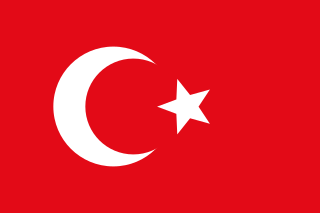 W
WThe Ottoman Navy, also known as the Ottoman Fleet, was established in the early 14th century after the Ottoman Empire first expanded to reach the sea in 1323 by capturing Karamürsel, the site of the first Ottoman naval shipyard and the nucleus of the future Navy. During its long existence, it was involved in many conflicts and signed a number of maritime treaties. At its height, the Navy extended to the Indian Ocean, sending an expedition to Indonesia in 1565.
 W
WHenry Eckford was a Scottish-born American shipbuilder, naval architect, industrial engineer, and entrepreneur who worked for the United States Navy and the navy of the Ottoman Empire in the early 19th century. After building a national reputation in the United States through his shipbuilding successes during the War of 1812, he became a prominent business and political figure in New York City in the 1810s, 1820s, and early 1830s.
 W
WThe Eyalet of the Archipelago was a first-level province (eyalet) of the Ottoman Empire. From its inception until the Tanzimat reforms of the mid-19th century, it was under the personal control of the Kapudan Pasha, the commander-in-chief of the Ottoman Navy.
 W
WFrigate captain is a naval rank in the naval forces of several countries. Corvette lies one level below Frigate.
 W
WThe Sanjak of Gelibolu or Gallipoli was a second-level Ottoman province encompassing the Gallipoli Peninsula and a portion of southern Thrace. Gelibolu was the first Ottoman province in Europe, and for over a century the main base of the Ottoman Navy. Thereafter, and until the 18th century, it served as the seat of the Kapudan Pasha and capital of the Eyalet of the Archipelago.
 W
WThe Imperial Arsenal was the main base and naval shipyard of the Ottoman Empire from the 16th century to the end of the Empire. It was located on the Golden Horn in the Ottoman capital, Constantinople.
 W
WCaptain is the name most often given in English-speaking navies to the rank corresponding to command of the largest ships. The rank is equal to the army rank of colonel and airforce rank of group captain.
 W
WCorvette captain is a rank in many navies which theoretically corresponds to command of a corvette. The equivalent rank in the United Kingdom, Commonwealth, and United States is lieutenant commander. The Royal Canadian Navy uses bilingual ranks, with capitaine de corvette being the French equivalent of lieutenant commander.
 W
WLevend or levendi was a name for irregular soldiers. The term originated with the Ottoman Navy, but eventually spread to encompass most irregular troops.
 W
WMersin Martyrs' Memorial, also known as the Monument of the Refah Martyrs is a monument in Mersin, Turkey
 W
WThe Ottoman Empire was founded at the beginning of the 14th century. Beginning in the 16th century, it also began acquiring possessions following series of wars in coastal North Africa.
 W
WThe Tomb of Hayreddin Barbarossa is final resting place of Ottoman admiral of the fleet Hayreddin Barbarossa whose naval victories secured Ottoman dominance over the Mediterranean during the mid 16th century.